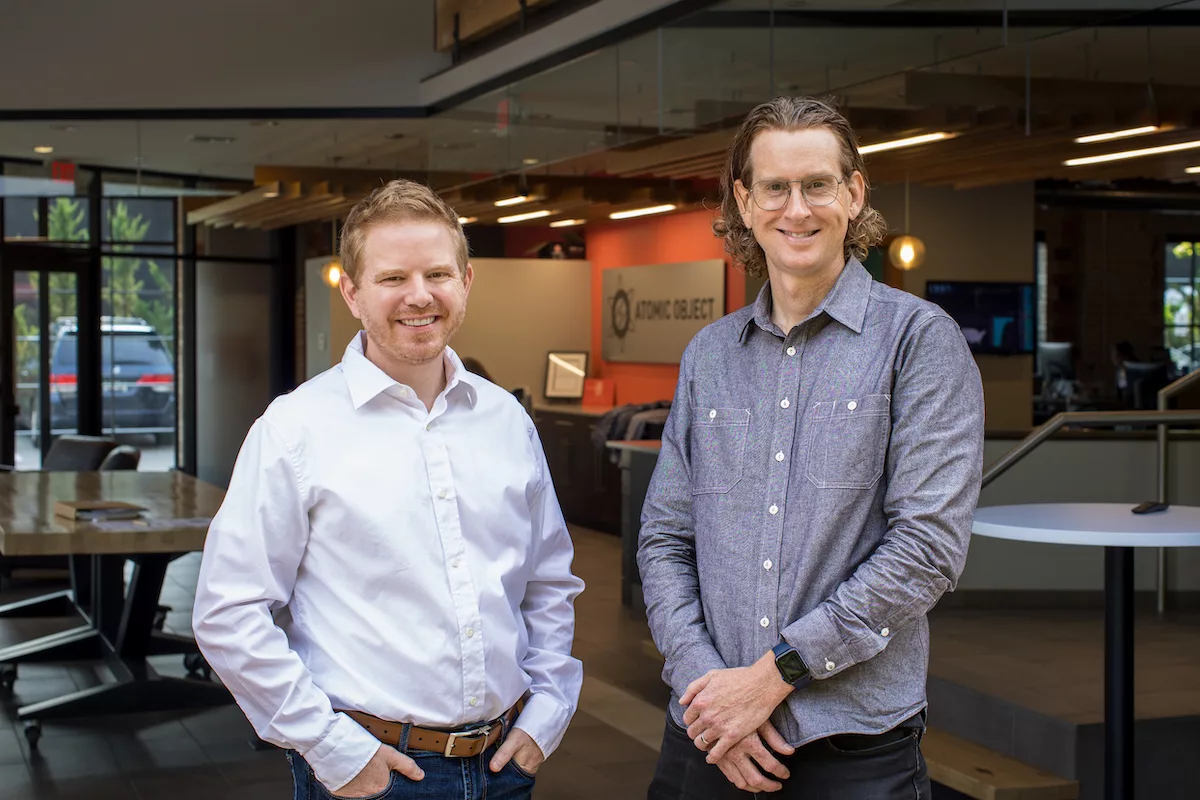I’ve had my fair share of experiences in the world of entrepreneurship. Over the course of my career, I’ve built 13 startups, but it’s important to note that I’ve also failed at 9 of them. However, every failure brought invaluable lessons, and during my time as an intrapreneur at KPMG, I gained insights into innovation within larger corporations. My journey has been like a sine wave, with periods of building startups, followed by recuperation in larger organizations.
One of the highlights of my entrepreneurial journey was co-founding a startup in Silicon Valley. I thrived in an environment where I was often the least knowledgeable person in the room. It allowed me to learn from brilliant minds and discover the art of building the right thing effectively.
Today, I’m the Founder and CEO of City Innovations, a venture studio in Grand Rapids, Michigan. With 9 out of 10 startups failing, we’re on a mission to help others flip the script on that statistic. Our goal is to increase the number of successful startups, and we believe the Market Validation Funnel is a game-changer that helps do that.
Check out this video to find out how or keep scrolling to read about our top tips.

9 Out of 10 Ventures Fail. But Why?
Before diving into the Market Validation Funnel, let’s address a critical question:
Why do most startups fail?
There’s a multitude of reasons, ranging from a lack of market need to running out of funds. However, one common thread among many failed ventures is their inability to build the right product quickly enough.
What You See Vs. What You Don’t See
Many entrepreneurs believe that having a brilliant idea and building something based on it is all it takes to succeed. They see the tip of the iceberg:
- Someone has an idea.
- Something is built.
- Everyone loves it.
- A unicorn is born.
This simplified view suggests that all you need is a brilliant idea and the ability to build it.
Unfortunately, the reality lies beneath the surface:
- Someone has an idea.
- Something is built.
- No one uses it.
- The idea is discarded and then they start over.
- Repeat steps 1-4, 9 more times.
- Something built finally works.
- Incorporate learning.
- Users like it better.
- Repeat steps 7-8, seven more times.
- The user base eventually grows to 100 users…
Building a successful venture is far from linear. Sadly, the “if I build it, they will come,” mentality often leads to failure.
Making Bets and Learning How To Build
The majority of entrepreneurs often make substantial bets and go all-in prematurely. They focus on building grand products when, in reality, they should be making smaller bets to learn and minimize risks.
In the world of entrepreneurship, the Lean Startup methodology advises entrepreneurs to “build, measure, and learn.” However, many misinterpret this and end up “building big, moving slow, and learning a little.” This approach fixates on solving problems that don’t exist yet, with success measured solely by the number of users — a lagging measure.
A better approach is to “build small, move fast, and learn a lot.” In this mindset, success is determined by the speed of learning, focusing on lead measures. This shift in perspective is crucial for building successful ventures.
So, How Do We Build the Right Thing?
The journey of a startup often starts with an idea and progresses through a series of bets. The first bet is typically the MVP (Minimum Viable Product) that nobody wants. This initial failure leads to subsequent bets, each refining the product until you eventually reach a point where everyone loves it and it becomes a viable venture.
At City Innovations, we’ve taken concepts and condensed them into a practical playbook — the Market Validation Funnel. This funnel empowers intra- and entrepreneurs to take more bets, but smaller and faster ones, enabling them to learn more about their customers.
Here’s an overview on how it works (or sign up for our free 6-part master class for a deep dive into each section).
1. Minimum Viable Model (MVM): Building a Strong Foundation
The very first step of building a rapid-growth venture (which is often underestimated but fundamentally crucial) is creating a Minimum Viable Model (MVM). This initial phase sets the stage for the entire entrepreneurial process, urging founders to treat their business model as a hypothesis to be tested and refined, rather than a fixed blueprint for success.
Let’s dive deeper into how to create an MVM effectively.
Business Modeling: Constructing the Blueprint
Imagine your venture’s business model as the blueprint for a grand architectural project. To build a solid foundation, you need to have a clear plan and framework. Here’s how to go about it.
- Utilize Tools: Start by using tools like the Lean Canvas. These frameworks provide a structured format for outlining your business model. The Lean Canvas, in particular, is renowned for its simplicity and effectiveness in capturing essential aspects of your venture.
- Order Matters: When filling out your business model canvas, ensure that you follow the correct ordering of components. This sequence is not arbitrary; it is designed to guide your thinking logically. For example, you should begin with Customer Segments and Problem-Solution Fit before diving into Revenue Streams and Cost Structure.
Confidence Scoring: Turning Data into Action
Creating a static business model isn’t enough. To truly harness the power of the MVM, you need to add a layer of quantitative analysis through confidence scoring.
- Confidence Scores: Assign a confidence score to each section of your business model. These scores reflect your level of certainty regarding the accuracy and validity of the assumptions you’ve made in each area. For instance, you might be very confident about your understanding of customer needs but less certain about your revenue projections.
- Actionable Dashboard: The magic of confidence scoring lies in its transformation of your business model canvas into an actionable dashboard. This dashboard not only highlights areas where your confidence is strong but, more importantly, it identifies the key assumptions that are shaky and require validation.
Assumption Modeling: Uncovering the Unknowns
With confidence scoring in place, it’s time to focus on assumption modeling. This step is about making your implicit assumptions explicit and quantifiable.
- Using Confidence Scores: The confidence scores you assigned earlier serve as a starting point for assumption modeling. Low scores indicate areas where your understanding is weak, implying that these are the assumptions most in need of validation.
- Creating Assumptions: Translate these weak areas into concrete assumptions. For instance, if you have a low confidence score for your revenue projections, your assumption could be, “We assume customers are willing to pay X amount for our product.”
- Quantifying Assumptions: Attach specific metrics or measurements to these assumptions whenever possible. This quantification not only facilitates later validation but also ensures that you’re working with actionable data.
In essence, the MVM phase is about laying the groundwork for your venture’s success. It forces you to confront the uncertainties and assumptions that underpin your business concept.
By applying structured tools like the Lean Canvas, confidence scoring, and assumption modeling, you transform your business model into a dynamic, adaptable, and testable framework.
And remember, the MVM isn’t static; it’s the starting point of a continuous cycle of learning, testing, and refinement. It’s your venture’s compass, guiding you toward the right path by making your assumptions explicit, quantifiable, and ready for validation.
2. Minimum Viable Learnings (MVL)
At its core, MVL is about distilling your learning process down to its most essential components. It’s the idea that you should seek the minimum amount of information required to validate or invalidate critical assumptions about your business concept. In other words, it’s all about efficiently gaining the insights necessary to steer your venture in the right direction.
This stage focuses on determining the minimum necessary steps to validate or invalidate your business model assumptions through qualitative and quantitative research.
- Research: Develop a qualitative research plan that includes activities such as brand research, campaign effectiveness reviews, market landscape analysis, competitive analysis, consumer insights, customer satisfaction assessments, customer segmentation research, usability testing, and more.
- Tools: To conduct research, leverage tools like customer interviews, surveys, focus groups, ethnographic field studies, data analysis (e.i., Google Analytics, heat maps), and design thinking exercises (e.i., personas, observational research).
- Experiments: Create a list of market validation experiments for quantitative research. These experiments are structured, quantifiable tests designed to validate hypotheses about your product’s market viability. There are several different characteristics of market experiments to consider, including:
- Minimal Viable Effort: Constructed in days, run in weeks.
- Objective Focused: Clearly defined goals and objectives.
- Measurable Outcomes: Results are quantifiable.
- Replicable: Experiments can be repeated.
- Controlled Environment: Variables are controlled for accuracy.
- Iterative/Adaptable: The process allows for adjustments.
- Validated: Results validate or invalidate hypotheses.
These experiments help differentiate between what users say they would do and what they actually do — separating “talk” from “action.”
While it may seem slower, rigorous experimentation isolates variables, provides accurate insights, and accelerates progress toward your business goals.
- Learnings: Establish and add to a learning inventory. A Learning Inventory is a repository where team members consolidate their findings from research and market experiments. This is crucial because learnings are your most valuable resource in the early stages of a venture. You don’t want to waste time and money relearning, but rather build upon previous insights.
In summary, Minimum Viable Learnings are about adopting a lean and focused approach to learning in entrepreneurship.
By targeting the most critical assumptions, conducting efficient research, and continuously iterating, you can make smarter decisions, reduce risks, and increase the likelihood of success in your startup journey.
3. Minimum Viable Solution (MVS)
The third and final phase of the Market Validation Funnel is where your venture starts to take tangible shape with the creation of a Minimum Viable Solution (MVS). The MVS serves as a bridge between your initial concept and the full-fledged Minimum Viable Product (MVP), providing valuable insights and feedback without investing heavily in development.
An MVS is a pragmatic, low-fidelity, and high-touch representation of your concept. It’s a practical approach that combines existing off-the-shelf software, such as open-source solutions or Software as a Service (SaaS) platforms, with minimal custom coding.
The objective of this phase is to swiftly test your proposed solution in the real world and gather critical feedback to iterate and refine your idea further. Essentially, this is where you begin bridging the gap between a concept and reality.
Creating an MVS
To effectively create an MVS, you should follow a structured approach:
- Research and Evaluate Options: Alternative Markets — before diving headfirst into development, it’s essential to explore alternative markets or niches where your solution might find better traction. Market dynamics can vary significantly, and this exploration can unveil previously unconsidered opportunities.
- Open-Source Solutions: Consider leveraging open-source software components that align with your project’s requirements. Open-source solutions often provide a solid foundation for building your MVS, saving both time and resources.
Assemble Together
Imagine assembling your MVS like constructing a complex Lego structure. Instead of building everything from scratch, use existing tools, platforms, and software components as building blocks to expedite the development process.
- Low-Code/No-Code Tools: Explore low-code and no-code platforms that enable you to piece together functionalities quickly. Tools like WordPress, Shopify, or platforms with plugin ecosystems can be invaluable for constructing your MVS efficiently.
- Leverage Existing Resources: Don’t reinvent the wheel. If there are third-party services or APIs that can fulfill certain requirements of your MVS, integrate them seamlessly. This approach can drastically reduce development time and costs.
Run as a Larger Experiment
The key to the success of your MVS lies in the mindset you adopt during this phase. Instead of becoming overly attached to your solution, your primary focus should be on solving the problem you identified earlier.
This shift in perspective allows for:
- Quick Feedback: By treating your MVS as an experiment, you open the door for rapid feedback. Users’ interactions and responses can provide valuable insights into the viability of your solution.
- Adaptations: Embrace the idea that your MVS may need significant adjustments or even a complete pivot based on user feedback. This adaptability is a hallmark of successful startups that are willing to iterate and refine their offerings.
- Cost Savings: Since you’re not committing substantial resources to full-scale development at this stage, any necessary changes or pivots are less costly and time-consuming.
Remember, the goal of the MVS phase isn’t to deliver a polished, market-ready product, but to gain clarity and validate your concept in a real-world context.
It’s about finding out if your solution genuinely addresses the problem you aimed to solve and if there’s real demand for it.
The Takeaway
The Market Validation Funnel emphasizes the importance of quickly validating ideas and learning about customers rather than rushing into full-scale product development. This playbook provides entrepreneurs with a structured approach to build and scale their startups successfully.
By making smaller, faster bets and learning from them, entrepreneurs can increase their chances of navigating the treacherous waters of the startup world and emerge as successful ventures.
Remember, it’s not about building everything right away; it’s about building the right thing.
For the full tips on how to launch a successful venture, be sure to watch the video below and sign up for our free 6-part Master Class to learn how to build a venture that achieves exponential growth.




